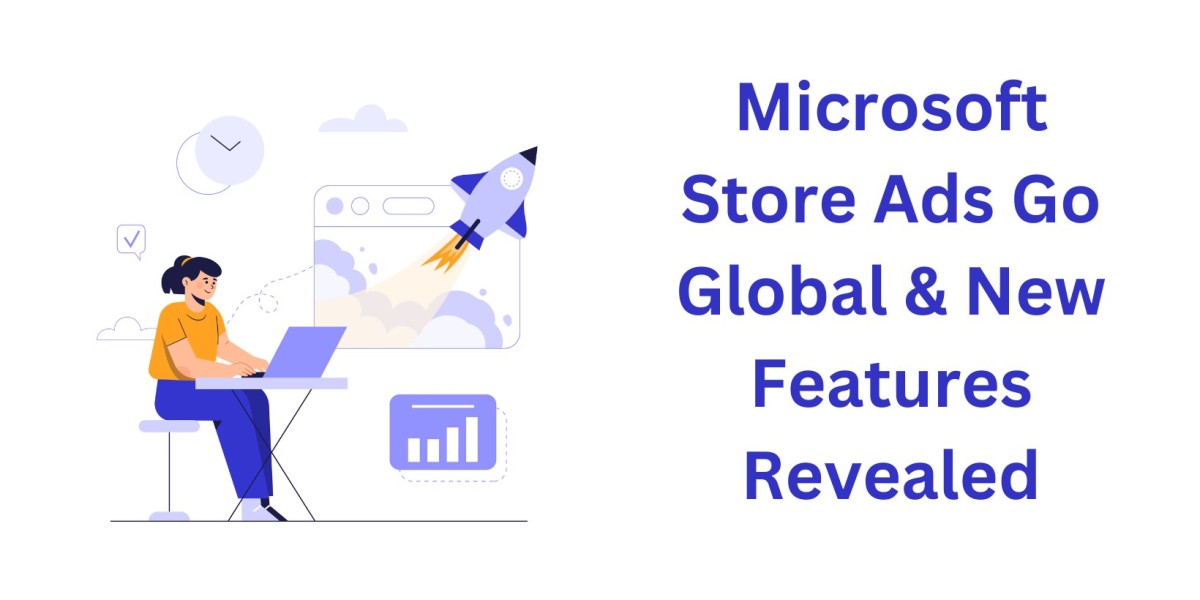Microsoft Store Ads have recently undergone a significant expansion and feature upgrade, marking a new era in digital advertising. The move towards global expansion and the introduction of new features are set to provide advertisers with powerful tools to enhance their campaigns and reach a broader audience. In this blog, we'll delve into the details of these changes, explore the new features, and discuss how you can leverage these updates to optimize your advertising strategy.
What’s New in Microsoft Store Ads?
Global Expansion
Reaching New Markets
Microsoft Store Ads have officially gone global, extending their reach to new regions around the world. This expansion means that advertisers can now target audiences in countries where Microsoft Store Ads were previously unavailable. With this broader reach, businesses have the opportunity to tap into new markets and grow their global presence.
New Market Entries: Microsoft Store Ads are now available in several new countries, allowing businesses to target international customers more effectively.
Localized Campaigns: Advertisers can create campaigns tailored to specific regions, taking into account local preferences and cultural nuances.
Multi-language Support: The global expansion includes support for multiple languages, making it easier to create and manage ads in different regions.
Enhanced Targeting Capabilities
With the global expansion, Microsoft Store Ads now offer enhanced targeting capabilities to help advertisers reach the right audience more precisely. This includes:
Geographic Targeting: Advertisers can specify geographic locations to target users based on their region, country, or even city.
Language Targeting: Create ads in the language of the target audience to increase engagement and relevance.
Behavioral Targeting: Use data-driven insights to target users based on their behavior, interests, and past interactions with your brand.
New Features and Tools
Advanced Ad Formats
Microsoft Store Ads have introduced several new ad formats to enhance the visual appeal and effectiveness of campaigns. These new formats include:
Rich Media Ads: Utilize rich media elements such as video, interactive content, and high-resolution images to capture user attention and drive engagement.
Carousel Ads: Showcase multiple products or services in a single ad, allowing users to scroll through and explore different options.
Dynamic Product Ads: Automatically generate ads based on the user’s previous interactions or browsing behavior, presenting highly relevant products.
Improved Analytics and Reporting
The new features also include enhancements to analytics and reporting tools, providing advertisers with deeper insights into campaign performance:
Real-time Data: Access real-time performance data to monitor campaign effectiveness and make quick adjustments as needed.
Customizable Reports: Create and customize reports to track key performance indicators (KPIs) that are important to your business.
Advanced Attribution Models: Use advanced attribution models to understand the impact of different touchpoints on conversions and optimize your strategies accordingly.
Enhanced Integration with Microsoft Products
The integration with other Microsoft products has been strengthened, offering more seamless interactions across platforms:
Integration with Microsoft 365: Utilize Microsoft 365 tools like Excel and Power BI to analyze and visualize ad performance data.
Synergy with LinkedIn Ads: Leverage LinkedIn’s professional targeting features alongside Microsoft Store Ads for a more comprehensive advertising approach.
Synchronization with Azure: Integrate with Microsoft Azure to enhance data management and analytics capabilities.
How to Leverage the New Features
Optimizing Global Campaigns
Tailor Ads for Local Markets
To make the most of the global expansion, tailor your ads for local markets by:
Understanding Local Preferences: Research cultural preferences and trends in each region to create relevant ad content.
Using Local Language: Craft your ads in the local language to resonate better with the audience and improve engagement.
Adjusting Ad Formats: Choose ad formats that are popular in the target region, whether that’s rich media, carousel ads, or dynamic product ads.
Implement Geographic and Language Targeting
Set Geographic Targets: Define geographic locations where you want your ads to appear, based on where your potential customers are located.
Customize Language Settings: Ensure your ads are displayed in the appropriate language for each target region to enhance relevance.
Enhancing Ad Performance with New Formats
Utilize Rich Media and Carousel Ads
Create Engaging Content: Use rich media elements like video and interactive features to make your ads more engaging and memorable.
Showcase Multiple Products: Implement carousel ads to highlight a range of products or services, encouraging users to explore more options.
Implement Dynamic Product Ads
Leverage User Data: Use data from previous interactions to generate dynamic ads that present products or services relevant to the user’s interests.
Automate Ad Creation: Automate the generation of dynamic ads to save time and ensure that users see the most relevant products.
Utilizing Enhanced Analytics
Monitor Real-time Performance
Track KPIs: Regularly monitor real-time data to keep track of key performance indicators such as click-through rates (CTR) and conversion rates.
Make Data-Driven Adjustments: Use real-time insights to make quick adjustments to your campaigns, optimizing for better results.
Customize Reporting
Generate Detailed Reports: Create customized reports to track the metrics that matter most to your business.
Analyze Performance Trends: Use advanced reporting tools to analyze performance trends and identify areas for improvement.
Integrating with Microsoft Products
Use Microsoft 365 for Analysis
Import Data into Excel: Export ad performance data to Excel for detailed analysis and visualization.
Create Dashboards in Power BI: Use Power BI to create interactive dashboards that provide a comprehensive view of your ad performance.
Leverage LinkedIn and Azure Integration
Combine LinkedIn Targeting: Integrate LinkedIn targeting with Microsoft Store Ads to reach professional audiences more effectively.
Utilize Azure for Data Management: Use Azure for enhanced data management and analytics capabilities, improving your ability to manage and optimize your campaigns.
Best Practices for Maximizing Ad Effectiveness
Ensure Accurate Targeting
Regularly Review Targeting Settings: Regularly review and adjust your targeting settings to ensure they align with your advertising goals and target audience.
Analyze Audience Data: Continuously analyze audience data to refine your targeting strategies and improve ad relevance.
Optimize Ad Creatives
Test Different Formats: Experiment with different ad formats to determine which ones drive the best results for your campaigns.
Monitor Creative Performance: Track the performance of your ad creatives and make adjustments based on performance data to maximize engagement and conversions.
Keep Up with Updates
Stay Informed About New Features: Keep up with the latest updates and features in Microsoft Store Ads to take advantage of new opportunities and tools.
Participate in Training: Attend training sessions and webinars to stay updated with best practices and industry trends.
Conclusion
The global expansion and new features of Microsoft Store Ads present exciting opportunities for advertisers to enhance their campaigns and reach a broader audience. By leveraging the new ad formats, improved analytics, and strengthened integrations, businesses can optimize their advertising strategies for better results. For those seeking cost-effective solutions in digital advertising, exploring affordable PPC marketing options can provide valuable support in making the most of these new features. Embracing these advancements will help you stay competitive and drive more effective advertising campaigns.
FAQs
What are the new features in Microsoft Store Ads?
The new features include global expansion, advanced ad formats (rich media, carousel, and dynamic product ads), improved analytics and reporting, and enhanced integration with Microsoft products like Microsoft 365, LinkedIn Ads, and Azure.
How can I tailor my ads for local markets?
Tailor your ads for local markets by understanding local preferences, using the local language, and choosing ad formats that are popular in the target region.
What are dynamic product ads?
Dynamic product ads automatically generate ads based on the user’s previous interactions or browsing behavior, presenting products that are highly relevant to their interests.
How can I integrate Microsoft Store Ads with Microsoft 365?
You can integrate Microsoft Store Ads with Microsoft 365 by exporting ad performance data to Excel and using Power BI for advanced analysis and visualization.
What are some affordable PPC marketing options?
Affordable PPC marketing options include using budget-friendly advertising tools, exploring cost-effective platforms, and working with agencies that offer tailored solutions within your budget. These options help optimize your campaigns without overspending.








